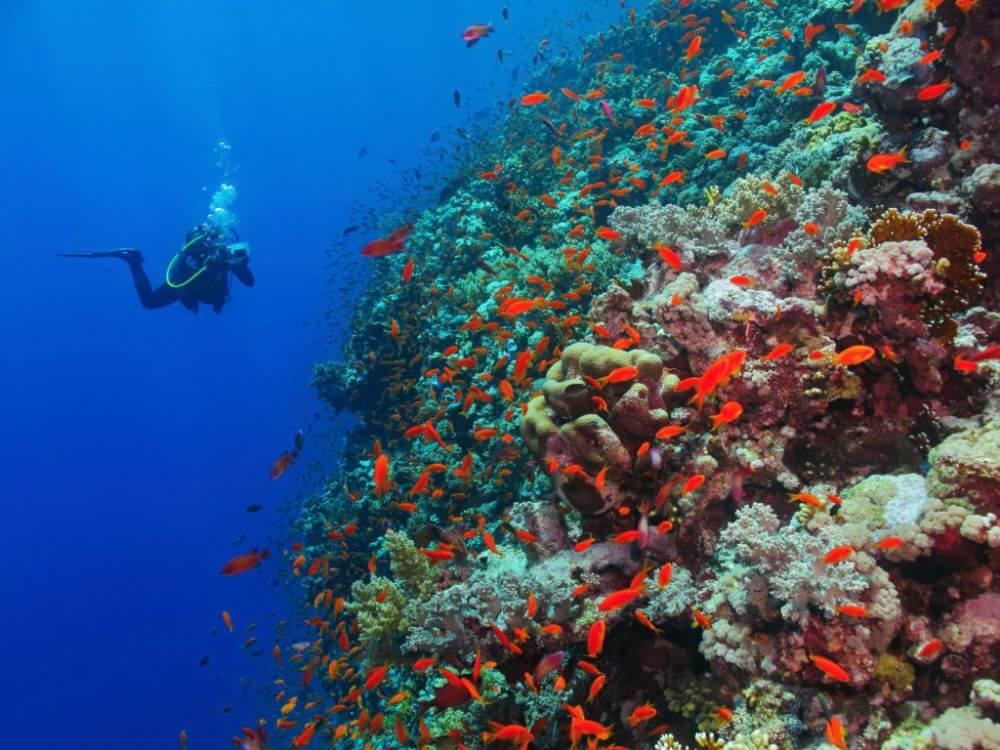
RED SEA by Diving Squad - Regions, Seasons, Guide & Ideas
If you’re thinking about diving in Egypts’ Red Sea – you’re on the right page. Diving holidays in Egypt offer some of the best and most varied scuba experiences in the world.
But take heed. Varied is the key word when it comes to Red Sea diving. Egypt is a vast country and whilst some regions of it’s Red Sea are suitable for beginners; others are for experienced divers only.
Plus, whereas some regions are famous for their abundant shipwrecks, others have almost no wrecks whatsoever – but make up for it by teaming with sharks, manta rays, dolphins and even dugongs.
Add to this a fluctuating dive season and two very different ways to experience Red Sea diving, each with their own advantages and disadvantages… and things start to look more complicated.
But you have a secret weapon: this ultimate guide for how to dive the Red Sea. In it, we lay out what makes Egypt diving unique, what it’s different regions have to offer, how to dive there and vital info like when to go. Let’s dive in!
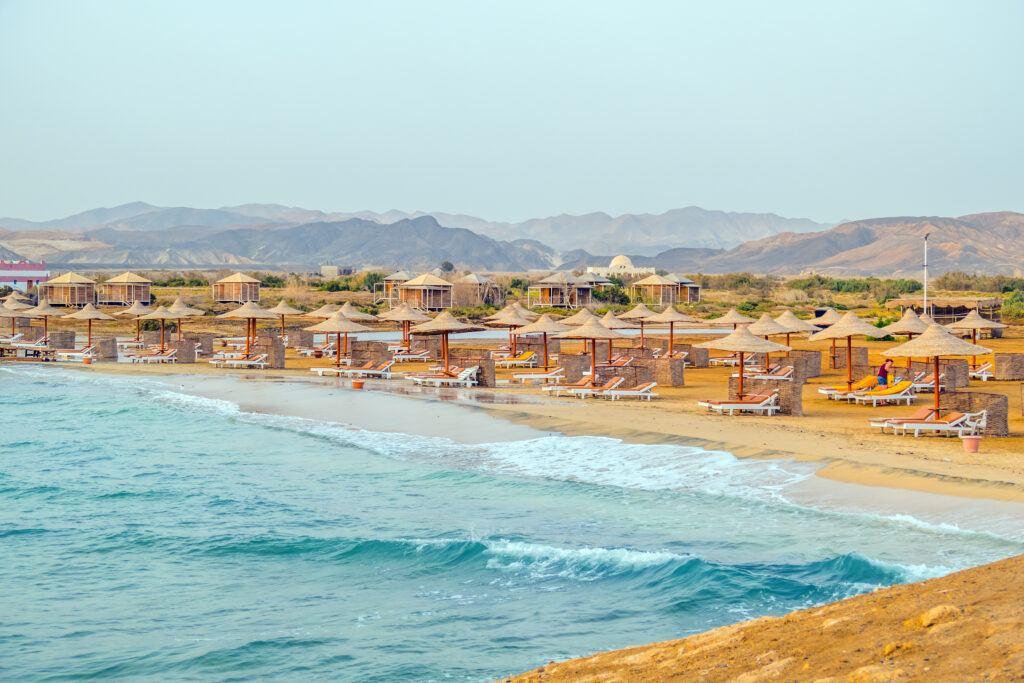
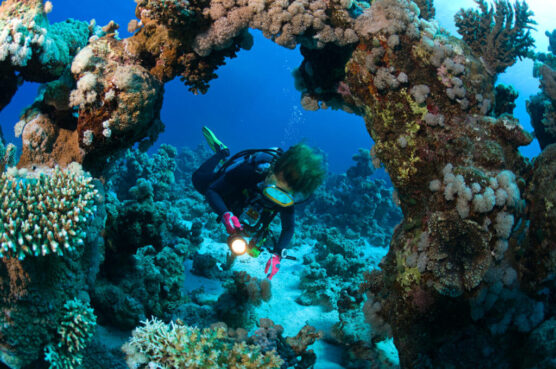
7 Reasons why Red Sea Diving is Out of this World:
1) Shipwrecks
Egypt’s Red Sea is practically overflowing with mind blowing shipwrecks; including navy vessels from World War 2 and steamships from the late 18th century.
You’ll be hard pushed to find a better selection of wrecks anywhere else in the world. It’s not uncommon for areas to have 5+ wrecks each, especially up north!
You can even dive the most famous shipwreck in the world: the SS Thistlegorm, a British navy ship that was bombed during World War 2 and now lies on the seabed, complete with it’s cargo of rifles and armoured vehicles.
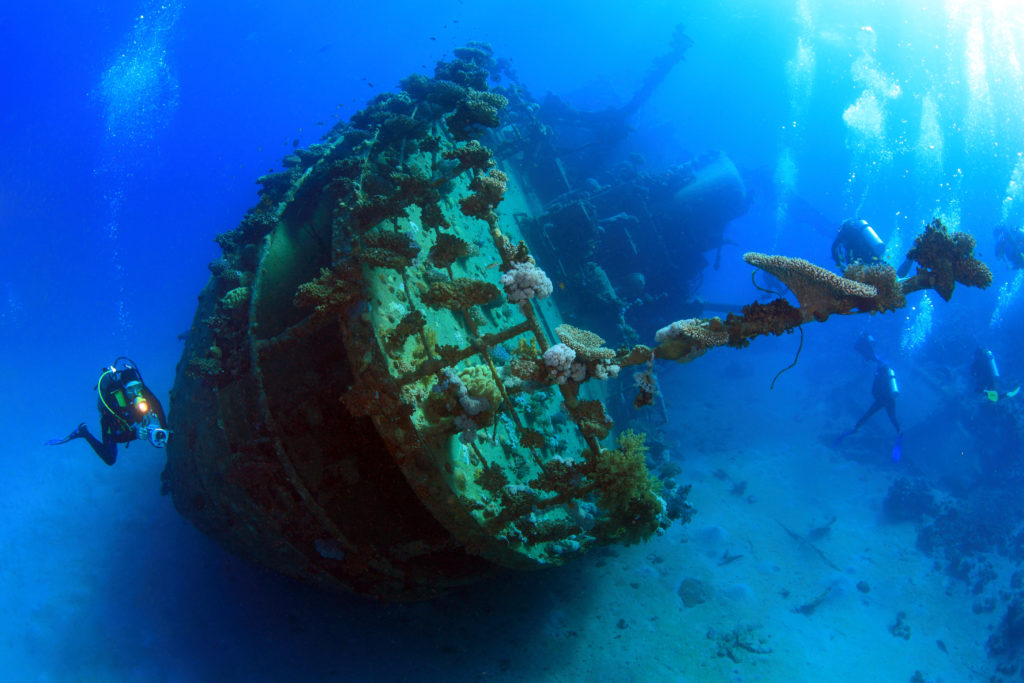
2) Stunning Coral Reef
For reasons unknown, Red Sea coral is highly resilient to climate change; meaning it has degraded significantly less than coral in virtually every other part of the world.
With Red Sea diving, you’ll get the opportunity to glimpse what ocean life used to be like, before us confounding humans ever existed.
Plus, because the Red Sea is seldom exposed to storms, it’s coral is able to form beautifully intricate structures, which would be destroyed in rougher waters.
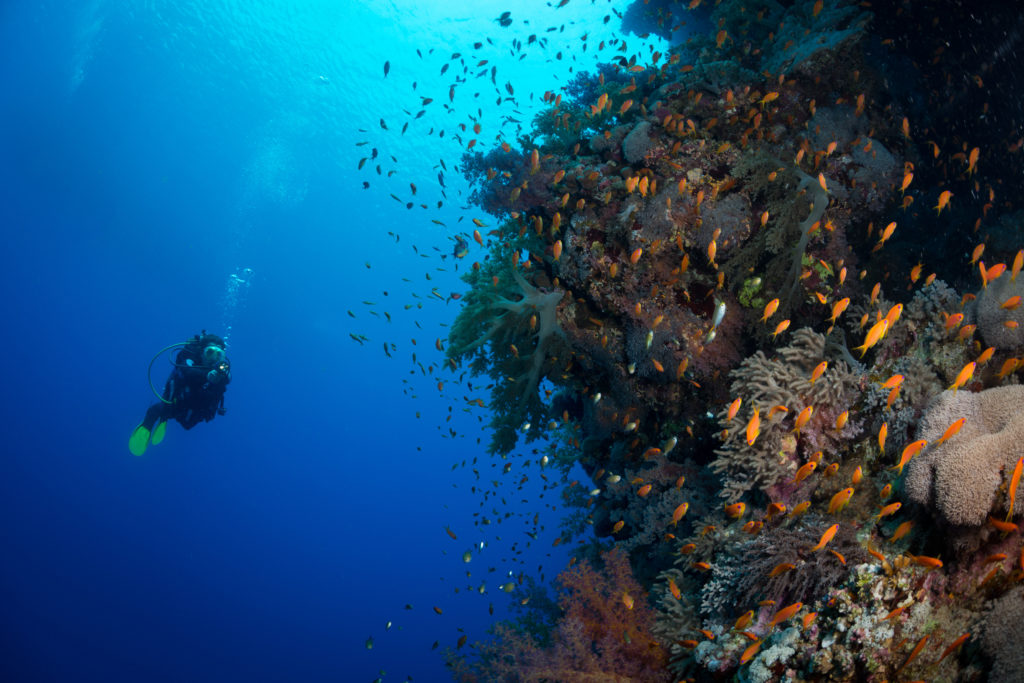
3) Sharks, Sharks, Sharks!
With it’s spectacular marine biodiversity, the Red Sea is a great place to witness an insane range of sharks, particularly further down south.
Around the best dive sites, described later, divers often spot Hammerhead Sharks, Oceanic Whitetip Sharks, Tiger Sharks, Black Tip Reef Sharks, Thresher Sharks, Guitar Sharks and Whale Sharks.
You’ll be hard pushed to find such a wide variety of shark species anywhere else. It’s even possible to go on shark themed dive safaris with some diving liveaboards.
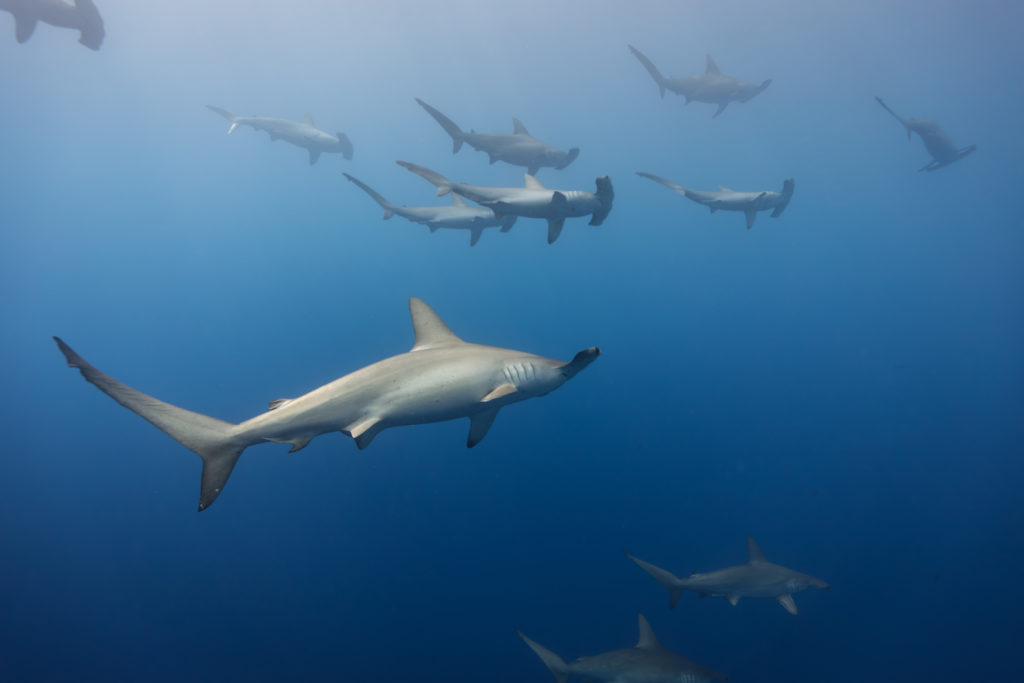
4) Dugong, Dolphins and Manta Rays
Manta Rays regularly pop up between September – November whilst Dolphins are spotted year round.
There’s actually a famous dive site (Dolphin House) down south that is home to a resident pod of friendly Spinner Dolphins whom you can dive or snorkel with.
Plus there is even a small population of Dugong, aka sea cows. Other pelagics include Tuna, Giant Barracuda and Travallys. And prepare yourself for lots of turtles to!
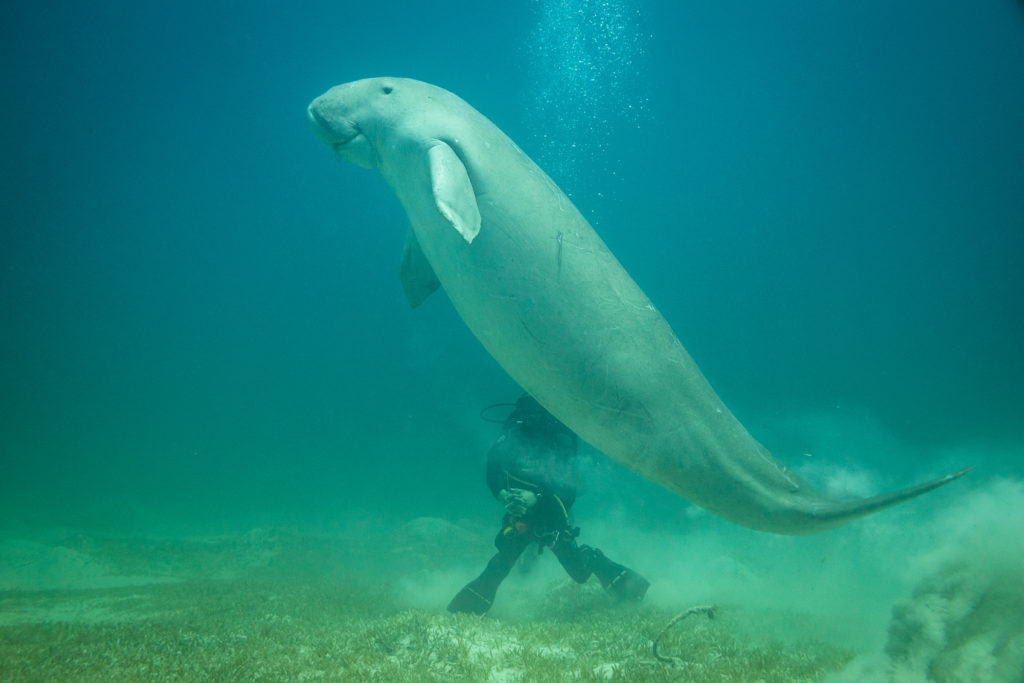
5) Beginner Friendly (North)
The North Red Sea harbours calm waters and many great shallow dive sites, making it a fantastic place those who want to learn to scuba dive in a safe yet awe inspiring environment.
In fact, many of the northern shipwrecks are in calm, shallow waters, meaning that not only can you learn scuba diving basics here, it’s a great place to learn to wreck dive to when you’re ready to progress.
It’s estimated that after south east asia, more people complete their scuba certification in the red sea than anywhere else in the world.
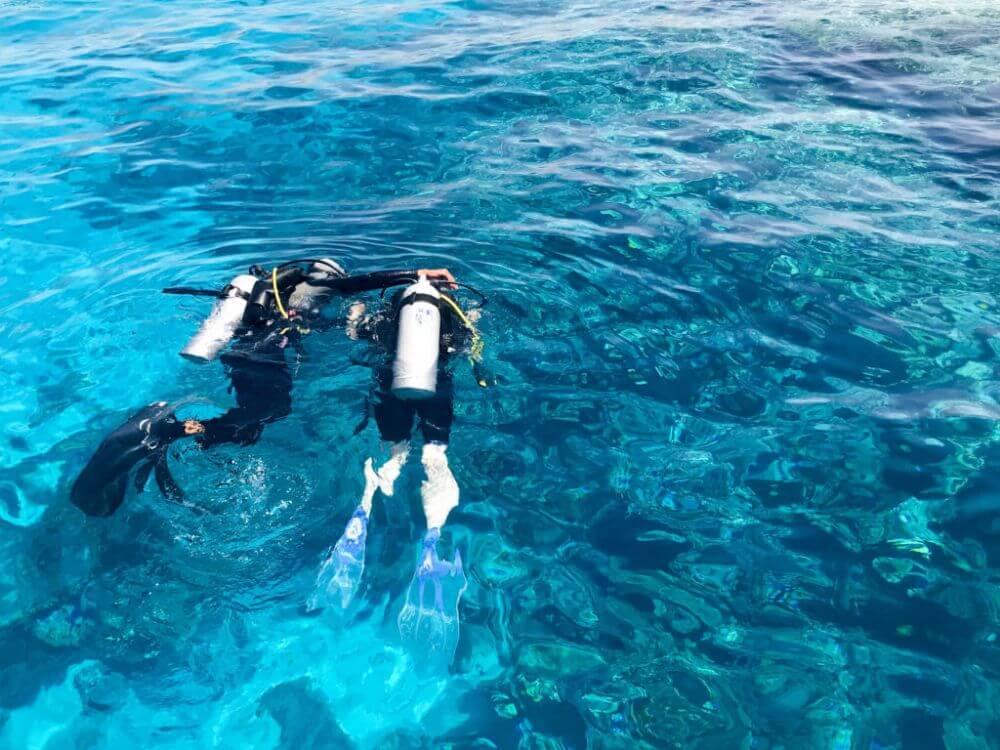
6) Advanced Divers Paradise (South)
Meanwhile, the South Red Sea is best suited to advanced divers on account of strong currents and deep, far from shore dive sites.
For the bold and knowledgeable, Egypts’ South Red Sea is an exciting playground, filled with walls, tunnels, swim throughs and even a Blue Hole.
The best bit? South is also where the most abundant pelagics and pristine coral are. Because it’s only suitable for advanced divers you wont’ have to share your dive sites with anyone else.
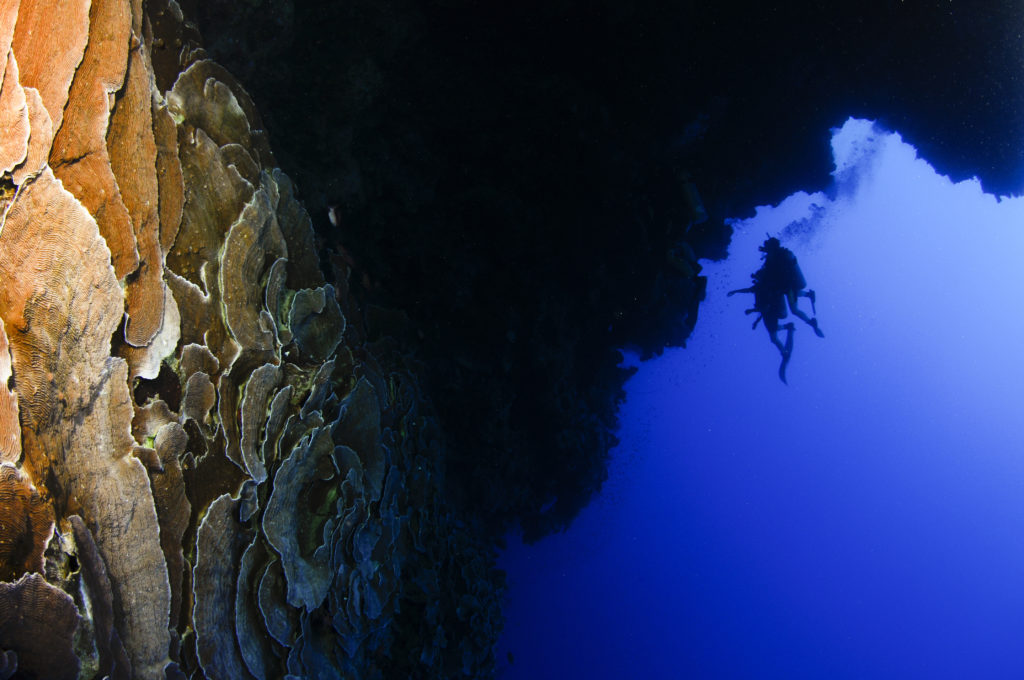
7) Epic Cultural and Sightseeing
Admit it. When you think of Egypt, you conjure to mind whimsical pyramids, beautiful mosques and epic mountains.
All these cultural and geographic spectacles – and indeed more incredible sights you’ve probably never even heard of, await your exploration in between the time you spend beneath the waves.
With many famous landmarks close to the coast – some even in the very same locations as popular diving resort towns, it’s easy to dive and sightsee.

How to go Diving in Egypt's Red Sea
Option 1 – Embark upon a Red Sea diving safari liveaboard. This is where you live aboard a yacht for anywhere from a few days to a couple of weeks. During this time, you’ll visit the same famous dive sites that you would if you were staying in a coastal resort town….as well as the more distant and pristine dive sites that are only accessible via liveaboard. Read More.
Option 2 – Stay at a Coastal Resort Town that is close to famous Red Seas dive sites, which you will make day trips to, arranged by a dive centre / your diving resort. Read More.
Something we want to make clear – there’s not really any major difference in price between either of the two options. Both liveaboards and diving resorts, offer many choices from budget through to midrange all the way to luxury, meaning you can essentially decide how much you want to spend, either way.
Option 1 - Red Sea Liveaboard Diving Safari
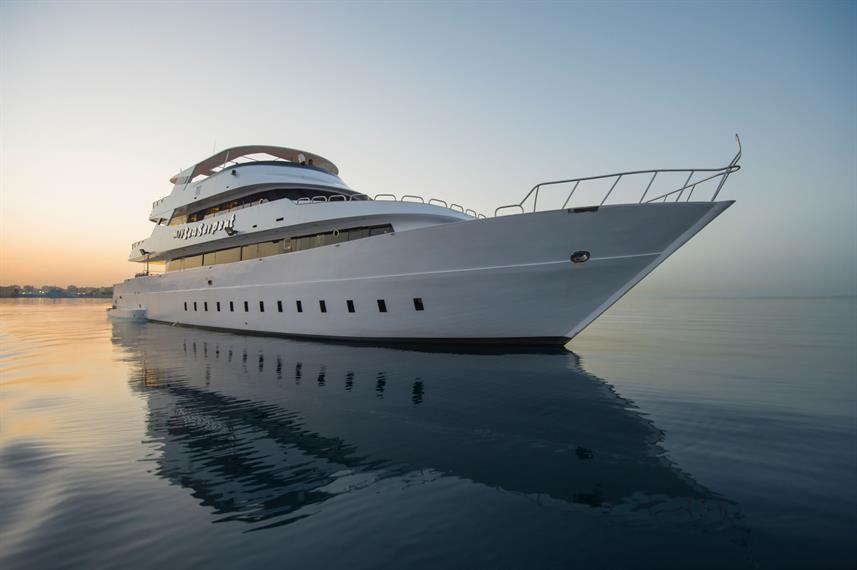
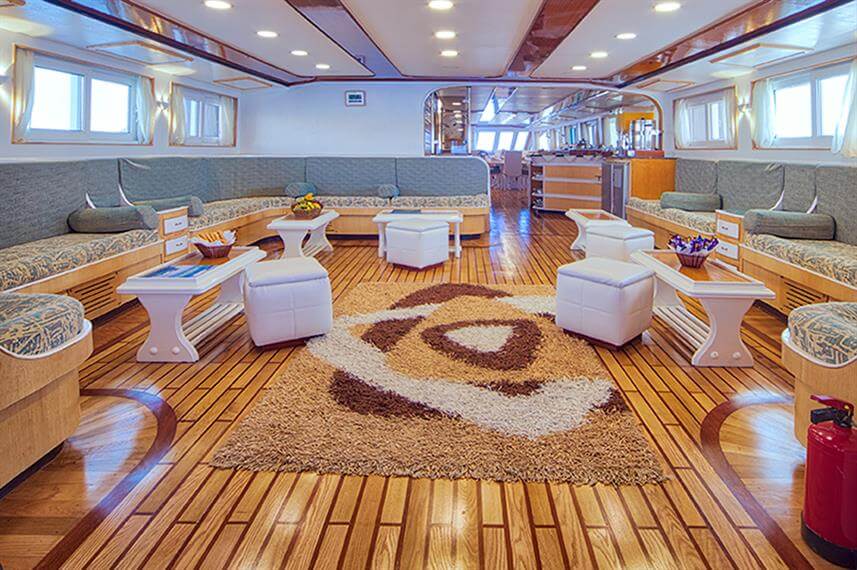
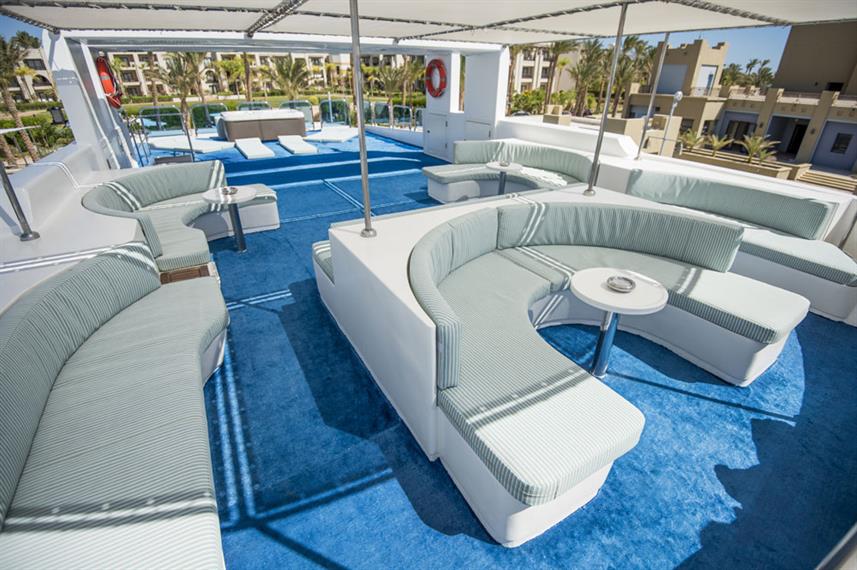
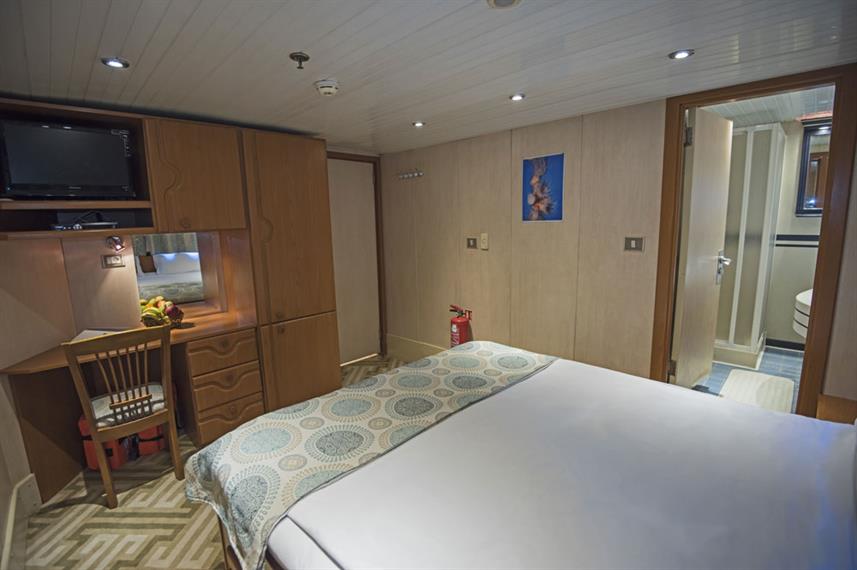
Red Sea Diving Liveaboard Pros
- Visit exclusive dive sites, that can only be accessed via liveaboard.
- There will be few, if any other divers at your dive sites.
- Still get to visit the best dive sites you would have gone to if you went from a diving resort town.
- As you travel from one dive site to another, you will be on a yacht with much more space and better facilities than anything you’d travel on, if going via a small boat from a resort town.
Red Sea Diving Liveaboard Cons
- You need to already have diving experience to go on red sea diving liveabaords. It’s not possible to learn to dive on them.
- You will be on the yacht the entire time, unable to make cultural land excursions. At least until afterwards.
Option 2 - Red Sea Diving Resort Town
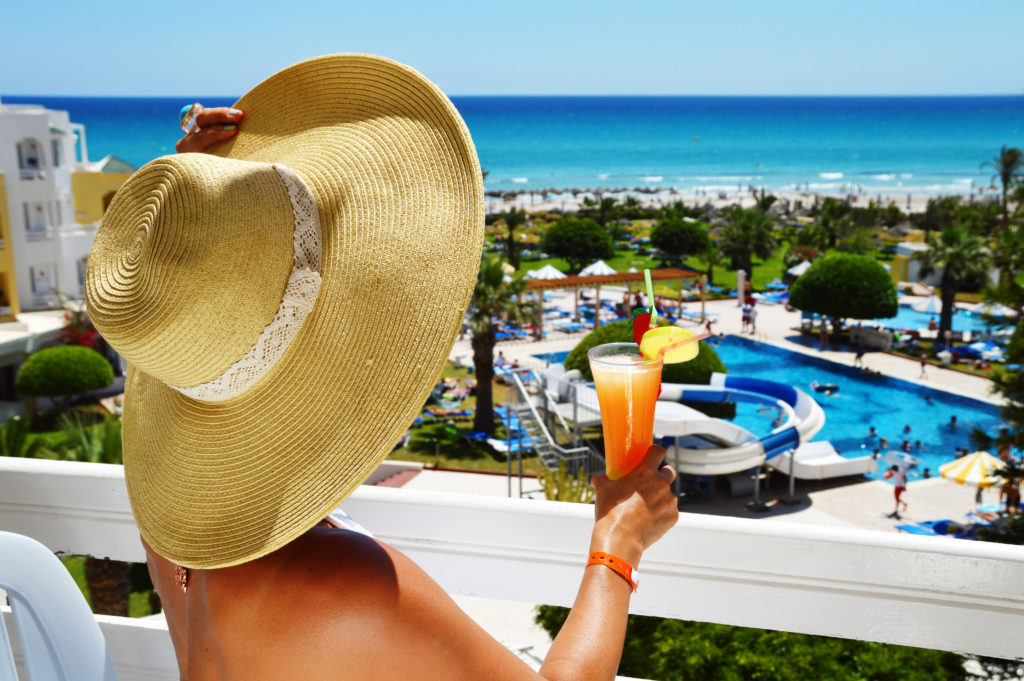
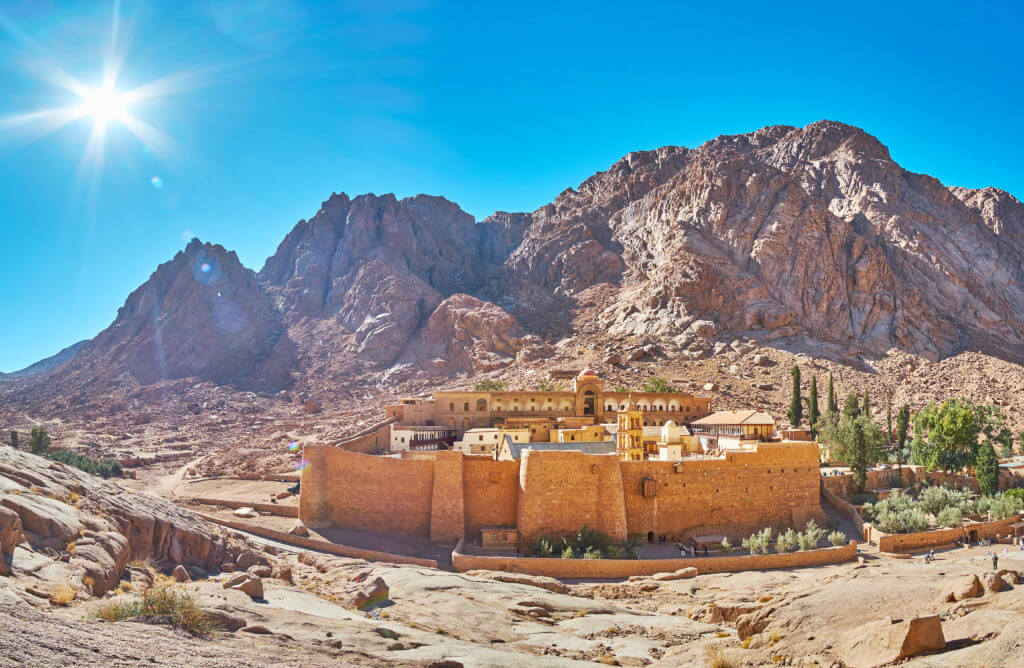
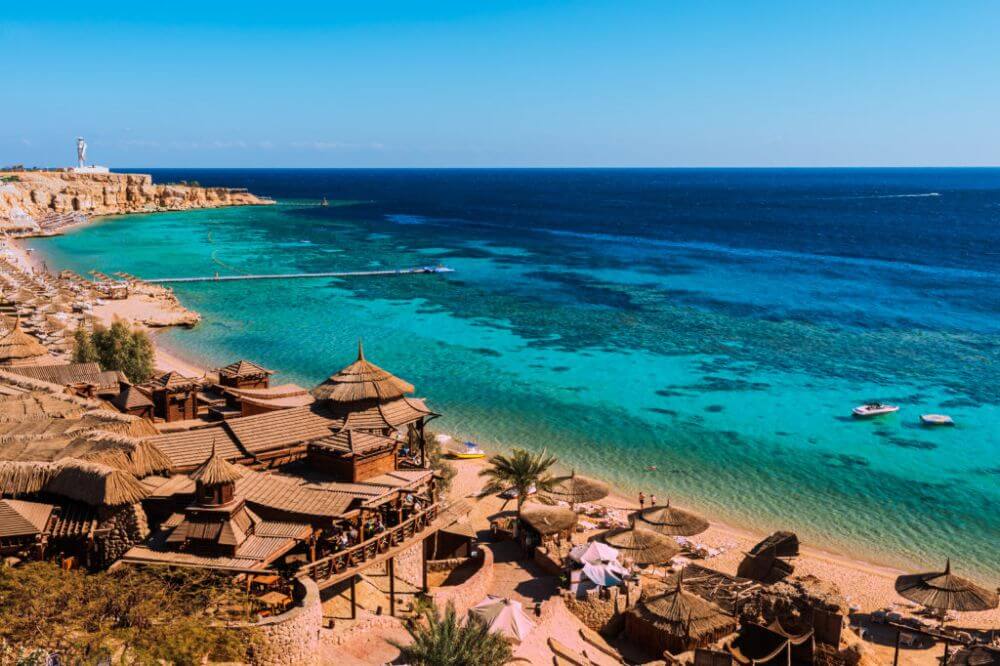

Red Sea Resort Town PROS
- Get to do other stuff like sightseeing and water sports
- Suitable for beginners and those who have not yet learnt to dive
- You can move on any time you like
Red Sea Resort Town CONS
- Dive sites are more crowded
- To reach the main dive sites, you have to travel several hours each way on a small boat with minimal amenities and space
- The VERY best Red Sea dive sites are not accessible, you can only reach these via liveaboard
Red Sea - North Region vs South
South Red Sea
This is the most beginner friendly region as it has the calmest water conditions and many of the best dive sites are in fairly shallow waters.
t’s also where the vast majority of Egypt’s famous shipwrecks are, including the SS Thistelgorm.
That said, there is considerably less large marine life up north compared to south. Sure it’s possible to spot reef sharks and turtles to, but for the best chance of spotting more exotic large marine life, you would be best off heading down south.
The two most popular (and also most touristy) of Egypt’s diving Resort Towns – Sharm El Sheikh and Hurghada are both located up north. A third, but less well known resort town – Dahab is also located here.
You can read more about these diving resorts here.
You can dive the North Red Sea by staying at these resorts or by taking a Red Sea liveaboard, making sure to pick one with a North bound itinerary.
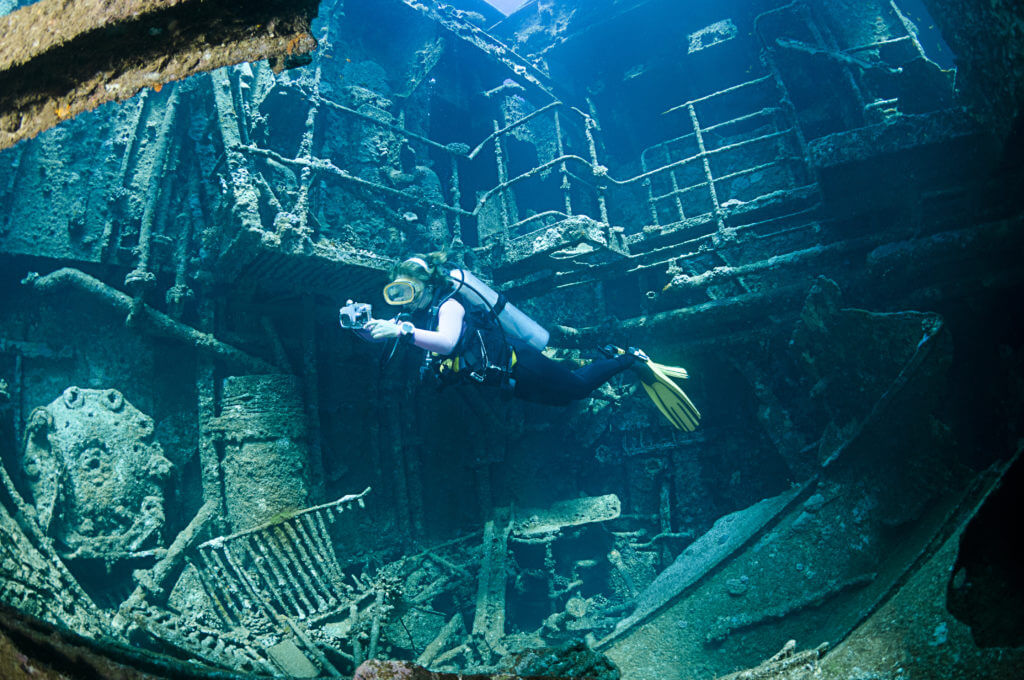
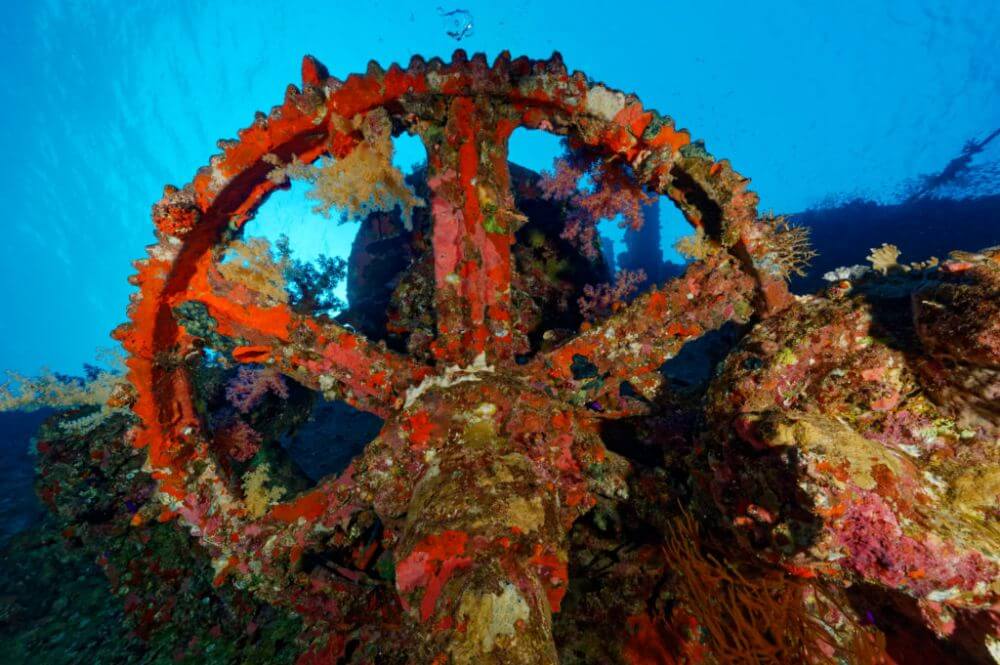
South Red Sea
The South Red sea has much stronger currents and many of it’s best dive sites are in deep waters. Generally speaking, most dive sites in Egypt’s south red sea are only suitable for advanced divers. This means you’re unlikely to bump into any other diving groups.
Egypts’ South Red Sea also harbours the most pristine coral reef as the most climate change resilient species are found in greater abundance down here.
Many exotic larger species are regularly spotted down south including Hammerhead Sharks, Oceanic White Tips, Guitar Sharks, Thresher Sharks, Tiger Sharks…as well as Dolphins and Dugong. It’s also easier to spot Whale Sharks and Manta Rays. That said, there are very few shipwrecks down south indeed.
You can dive some (but not all) of the best south red sea dive sites whilst staying at either of the two resort towns Marsa Alam and El Queseir. Both these places are much less touristy than the northern resorts. Read more about these below!
To experience the very best dive sites of the south and indeed all of the Red Sea, you can only do so via liveabaord – be sure to pick one with a southern itinerary!
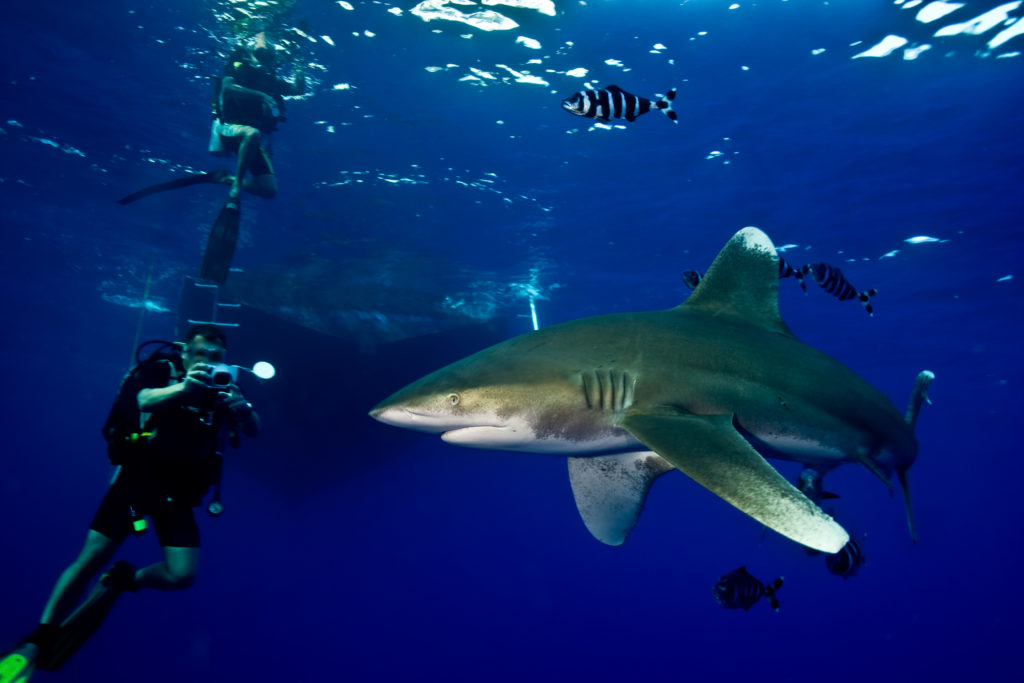
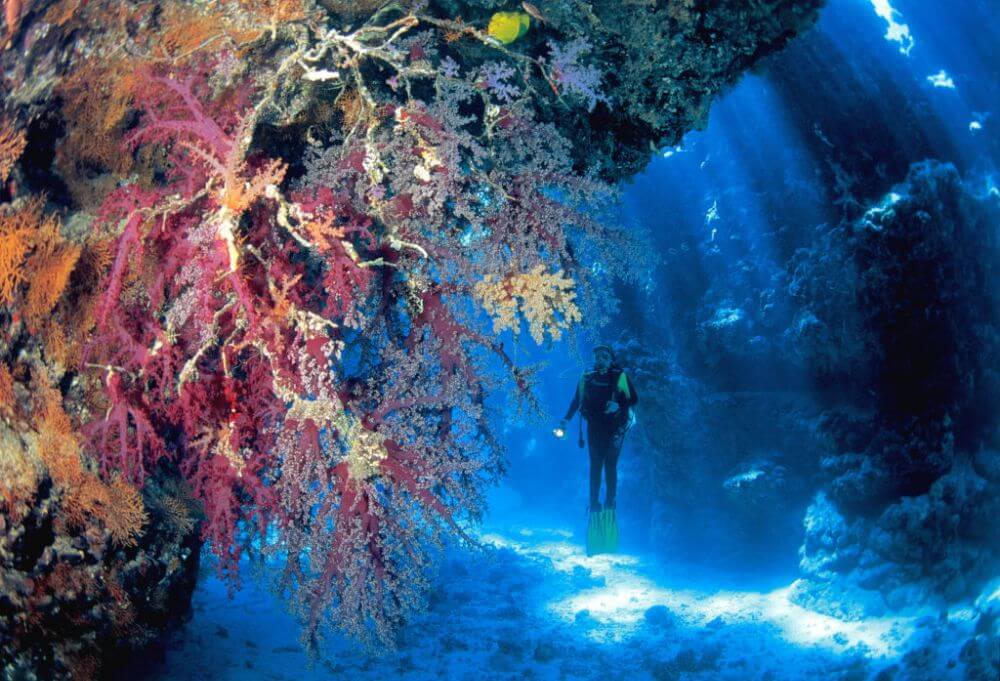
The 5 BEST Red Sea Diving Resort Towns in Egypt
In the following section we’re giong to review the hands down 5 best red sea diving resort locations in Egypt.
Be aware that when we talk about the top diving sites each of the regions these resorts are in have to offer…you can access all of these via liveaboard to!
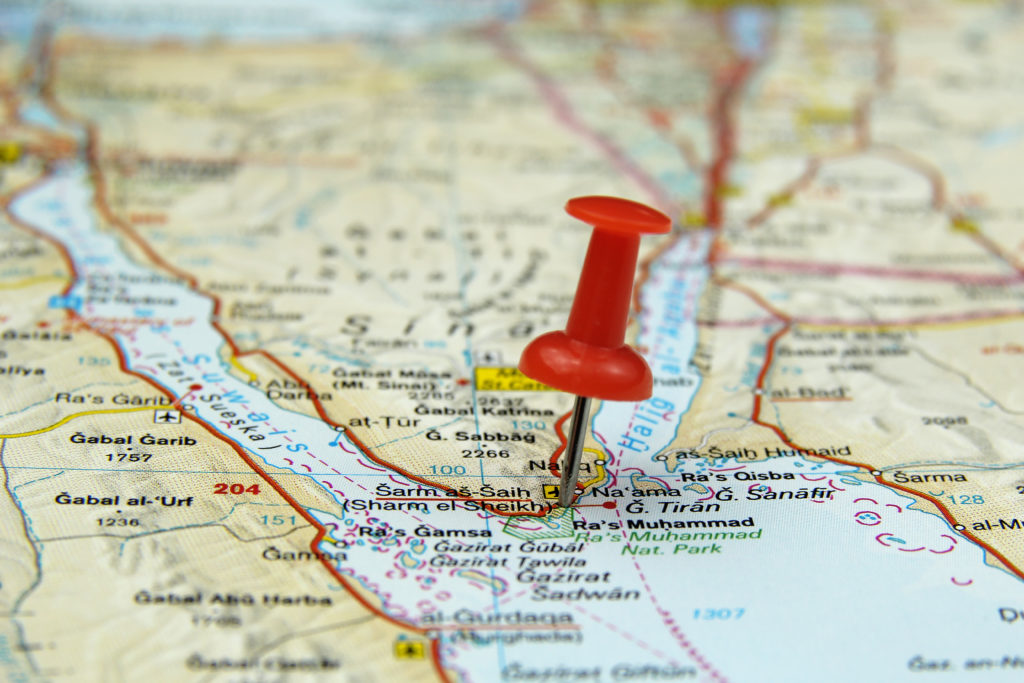

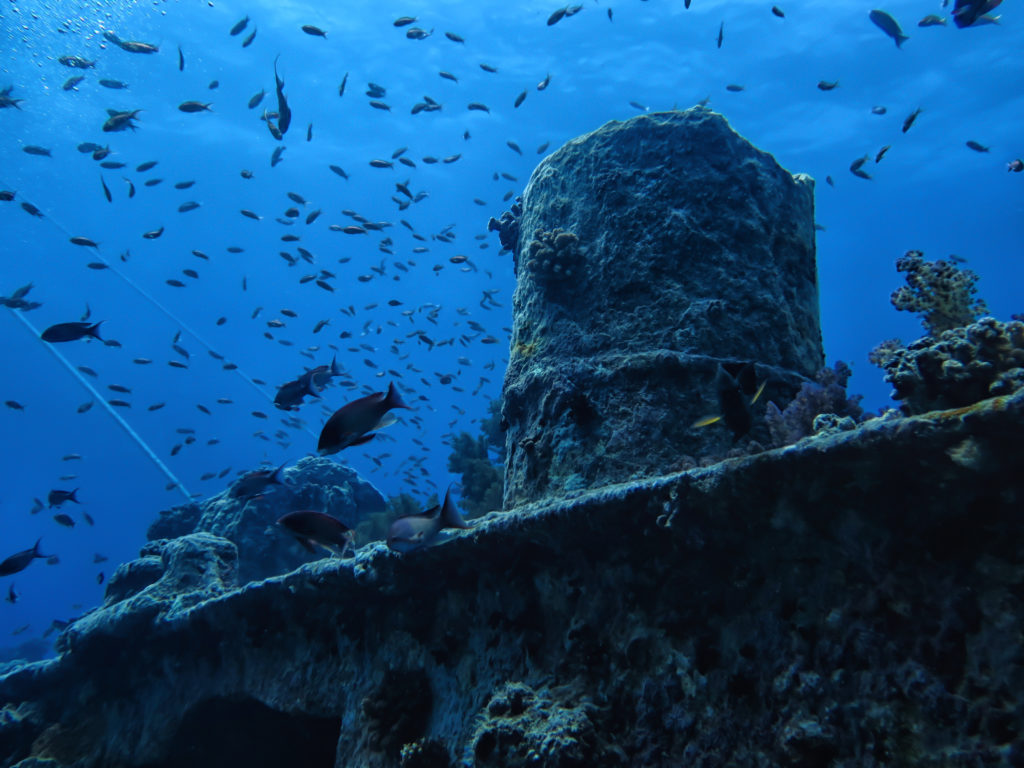

1) Sharm El Sheikh
Situated at the southern tip of the Sinai Peninsula, Sharm El Sheikh is Egypt’s most popular red sea diving destination – the waters here have superb visibility through which to witness the many incredible dive sites.
Sharm El Sheikh diving is suitable for both beginners and advanced divers, the latter of whom will enjoy the exciting drift dives found along the island reefs in the Straits of Tiran. Reef sharks can be spotted here!
The most famous area is Ras Mohammed National Marine Park, renowned for it’s spectacular wall dives and world famous shipwrecks.
The most famous of these is SS Thistlegorm – a huge British cargo ship. Sunk by German bombers in 1941, when she went down, so did her cargo including armoured vehicles, bikes and a whole armouries worth of weapons.
Do note, that the popularity of Sharm El Sheikh means you may have to share dive sites with many other divers during high season. Dive sites can be reached via liveabaord or dive centre, but it takes 3 – 4 hours to reach dive sites if you’re travelling from a dive centre instead of a liveaboard.
Sharm El Sheikh itself is a charming resort town, nestled amidst stunning landscapes; with a well developed tourist infrastructure and offering many fantastic nearby cultural experiences.
You can visit the incredible Monastery of St. Catherine’s, one of the world’s oldest working christian monasteries – or scale the incredible Mount Sinai where Moses is believed to have received the ten commandments!
Sharm El Sheikh is where most liveaboards that make northern itineraries start from. With a liveaboard you can dive all the best sites that you would with a resort as well as other, exclusive dive sites.
Sharm El Sheikh Dive Resorts:
- Our Favourite Luxury Sharm El Sheikh Dive Resort: Camel Dive Club & Hotel
- Top Mid-Range Sharm El Sheikh Dive Resort – Oonas Dive Club
- Best Budget Sharm El Sheikh Dive Resort: Dive Inn Resort
Sharm El Sheikh Diving PROS
- Suitable for beginners and advanced divers.
- Incredible wreck diving & exciting drift dives.
- Can be dived from a diving resort or liveaboard.
- Town has a great tourist infrastructure and many other exciting activities
- Jump off point for North Red Sea liveaboards!
Sharm El Sheikh Diving CONS
- Dive Sites can be overcrowded.
- Not ideal for macro or critter lovers.
- Takes 3 – 4 hours to reach best dive sites from dive centre.
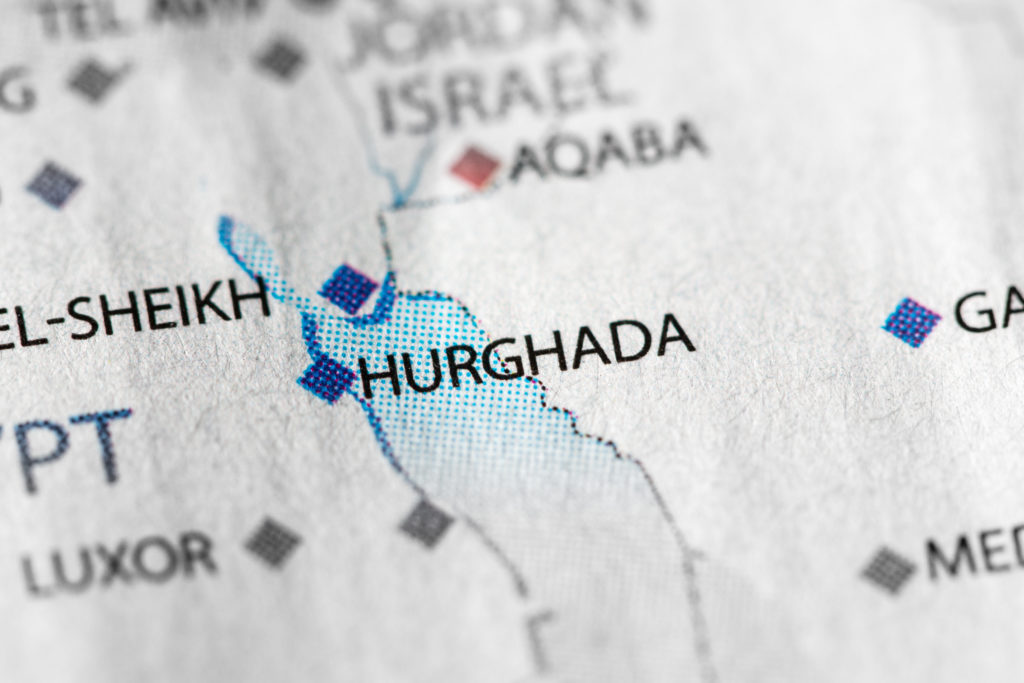
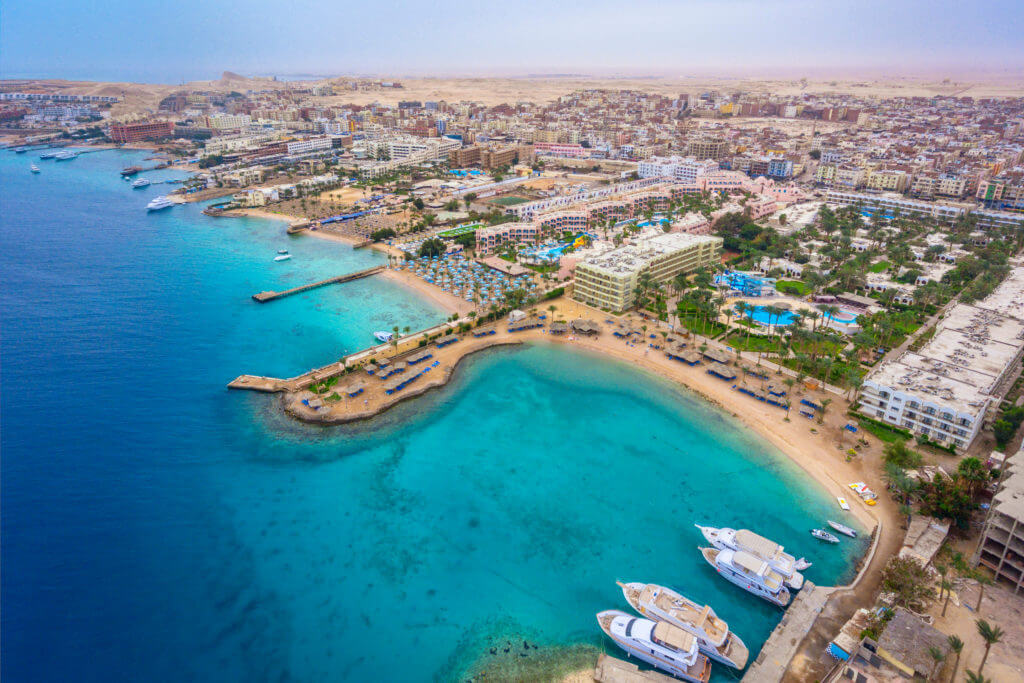
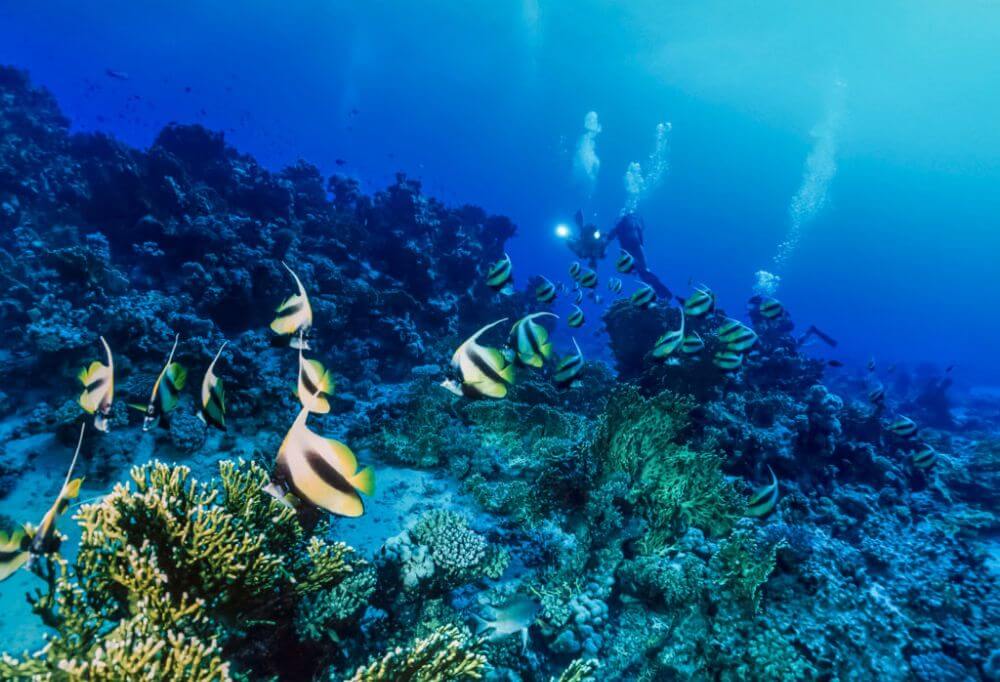
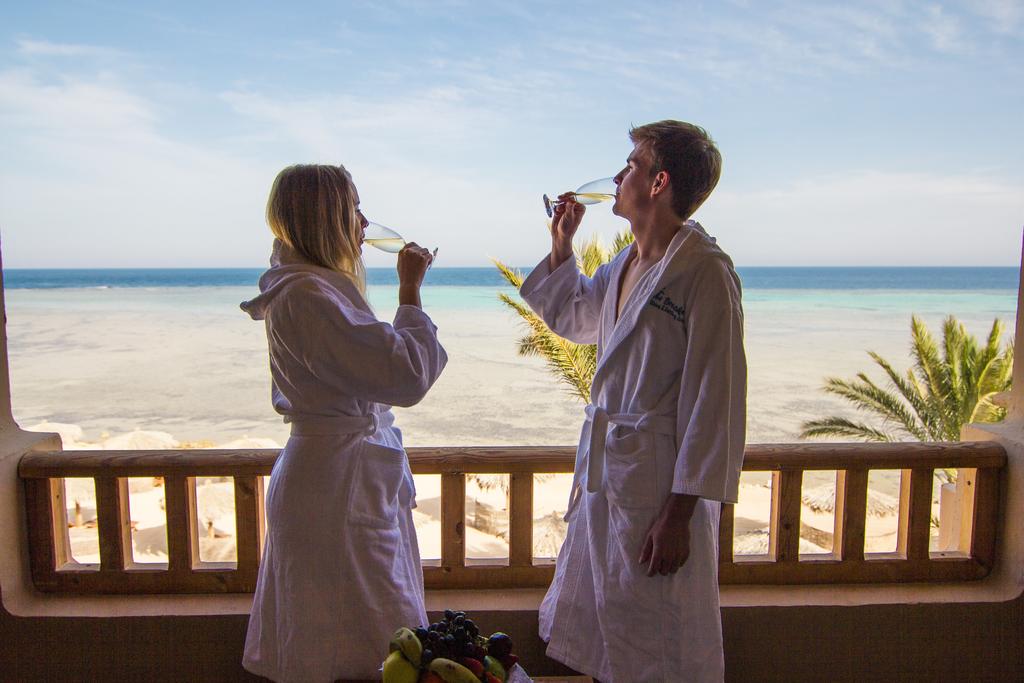
2) Hurghada
The second most popular Red Sea scuba diving destination is Hurghada; located 83 kilometres south west of Sharm, on the Egyption mainlands’ eastern coast.
Once a sleepy fishing village, it has now swollen to become the largest resort in all of mainland Egypt and is famous for both scuba diving and water sports such as windsurfing and kitesurfing.
This is a great location to learn to scuba dive as it offers many unique and exciting dive opportunities in easy conditions.
There are some great local shipwrecks such as El Mina or the Salem Express – both of which are in shallow waters, making them ideal first wreck dives for first time wreck divers.
A little further away lies Abu Nuhas reef, home to 7 more shipwrecks, 4 of which also lie in calm, shallow waters making them beginner friendly – including the Carnatic, which sunk all the way back in 1869!
Hurghada is a great place to spot all things colourful – soft coral, octopus, nudibranches, lionfish, bumpheaded parrotifsh and jet green moray eels are just a few examples.
Day trips to the SS Thistlegorm are widely available as are trips to the much deeper Rosalie Moller, which is far more seldom visited and only suited for the most grizzled of wreck diving veterans.
Hurghada Diving Centre's
- Our Favourite Hurghada Diving Centre / Resort – The Breakers Diving & Surfing Lodge
- Best Mid-Range Hurghada Diving Centre / Resort – Old Palace Resort
- Best Budget Hurghada Diving Centre – Sharm El Naga
Hurghada PROS
- Launch point for liveaboards travelling to South Red Sea.
- Many Beginner Friendly Shipwrecks.
- If you are at a Hurghada diving centre, dive sites take less time to reach than with Sharm El Sheikh.
- Many colourful species of fish and invertebrate can be sighted here.
Hurghada CONS
- Still get’s crowded, especially during high season.
- No national marine park.
- Significantly less cultural and sightseeing activities compared to Sharm El Sheikh
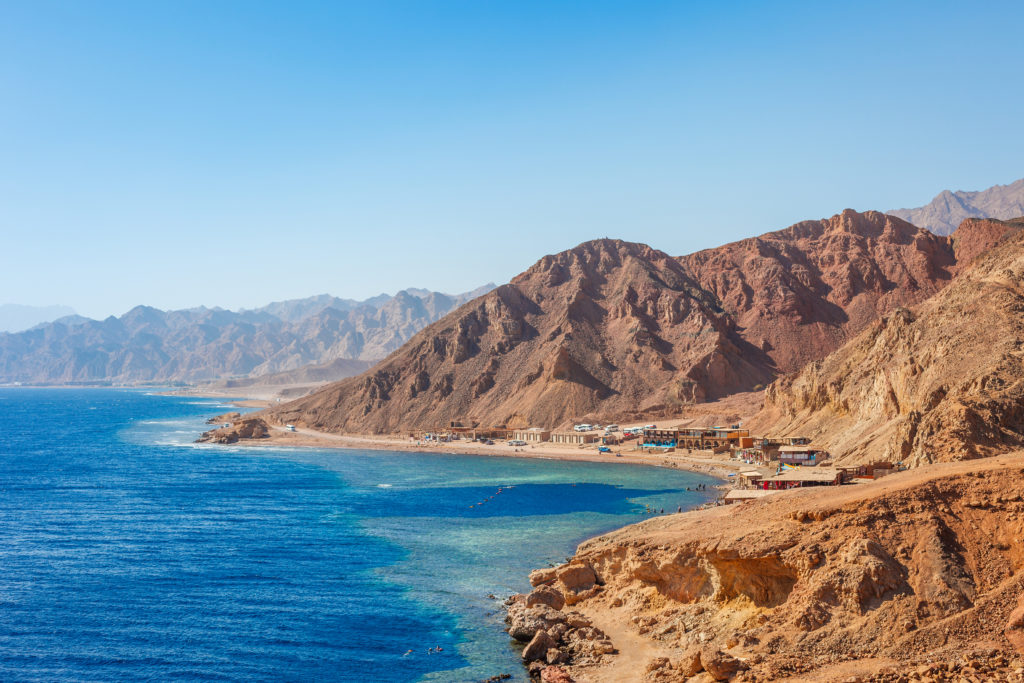
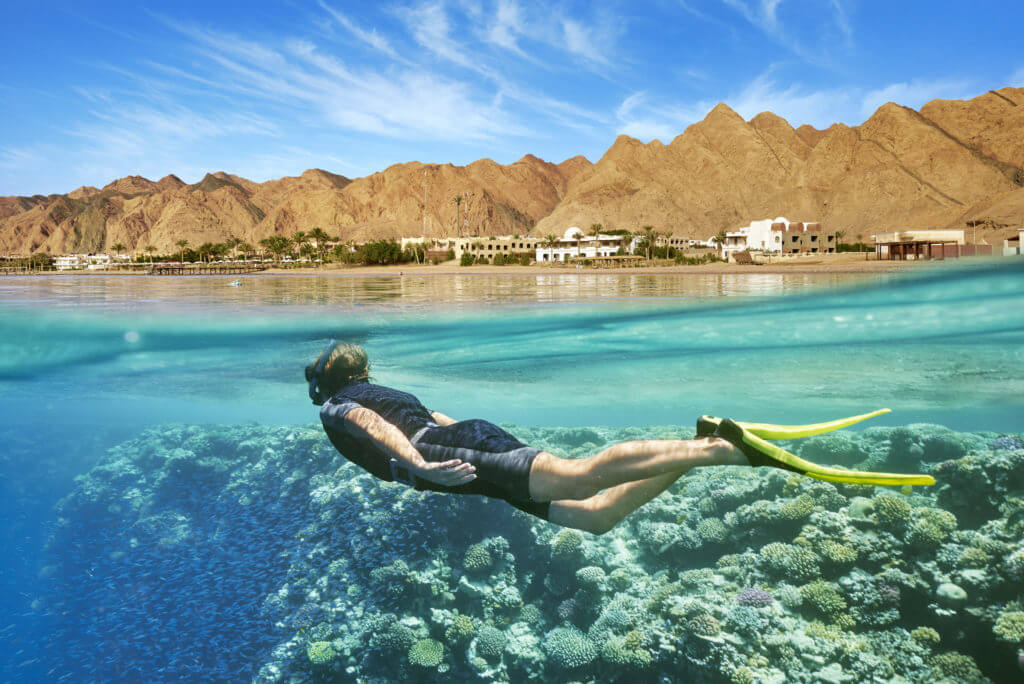
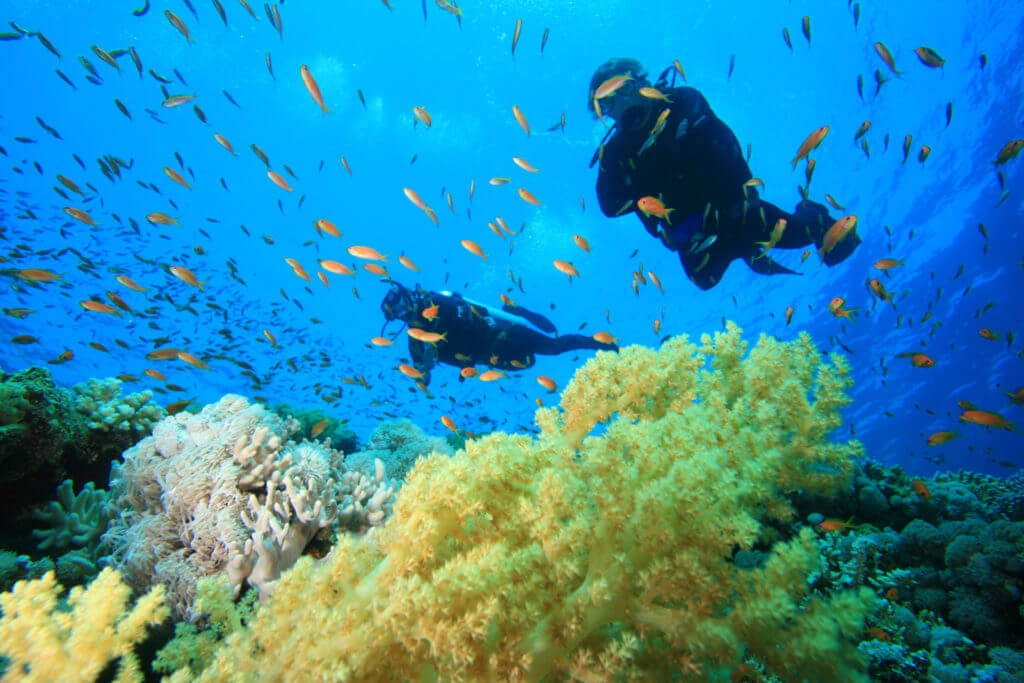

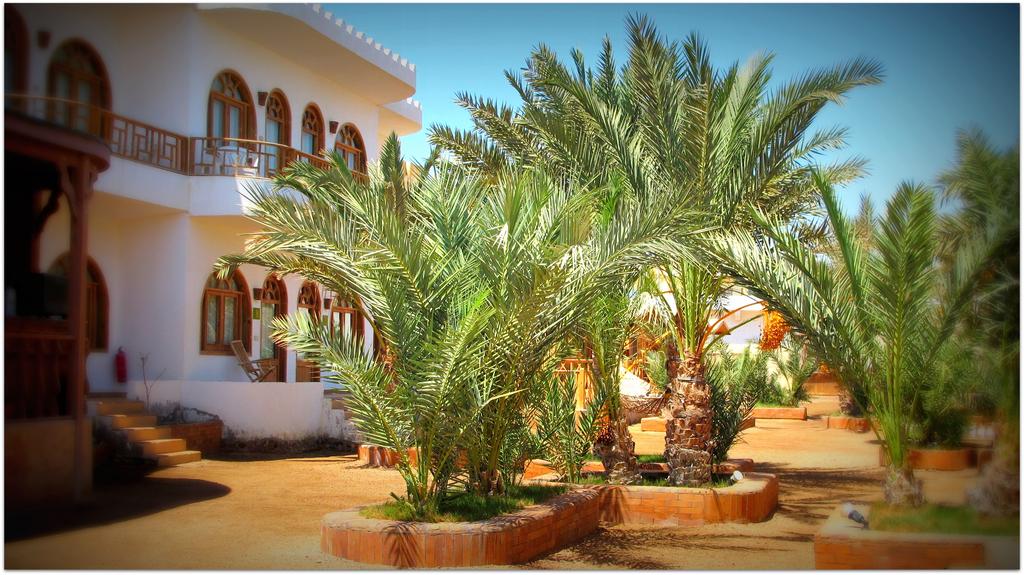
3) Dahab
80km north of Sharm El Sheikh, on the eastern coast of the Sinai Peninsula, lies an entirely different vibe to both Sharm and Hurghada.
Laid back and popular with backpackers, Dahab is a popular North Red Sea diving destination, yet is considerably less crowded and touristy.
Dahab offers fantastic diving, with all the usual reef fish of the Red Sea as well as barracudas, jacks and sometimes turtles. That said, pelagics seldom pass by and one is highly unlikely to spot any sharks. There are also no shipwrecks.
However, this location is well known for it’s the stunning coral reef and the fact that most dives are accessible from the shore…that said, considerable damage is being caused to the shallow reef by mass diving and careless divers.
Of the 500 dive centres here, many are reported to be lacking in scrupulousness when it comes to marine protocol so please…make sure you pick your diving centre carefully, dive responsibly and do try not to be a dick.
If you go to protected areas such as Ras Mumlach or Ras Abu Galum, you can still find superb and vibrant hard and soft coral – whilst ensuring you’re participating with a dive centre who are responsible enough to have been cleared to get there (but report them if they don’t act accordingly!)
But now for the craziest part: The thing Dahab is most famous for is it’s world famous Blue Hole Dive Site. This is a 70m hole within the coral reef that drops to 80m, with a 30m long arch travelling to the open sea on it’s bottom.
The sun rays penetrating the arches opening create spectacular and eerie lighting effects known to both impress and disorientate divers.
At shallow depths, this is an easy and beautiful dive…however, it is the arch that makes this blue hole the most dangerous dive site in the world. Around 30 scuba divers die attempting it every year.
Do not swim through the arch unless you are a highly experienced tech diver and deep diver and have a mixed gas system.
So: Dahab, an incredible and relatively off the beaten track destination, with next level coral reef. Dive in a manner that is responsible towards the ocean and yourself and you’ll love it!
Dahab Diving Schools
- Best Luxury Dahab Diving School / Resort – Dive Urge
- Best Mid-Range Dahab Diving School / Hotel – Shams Hotel & Dive Centre
- Best Budget Dahab Diving School / Hostel – Deep Blue Divers Hostel
Dahab PROS
- Much less touristy than Sharm El Sheikh and Hurghada
- Incredible coral reef
- Blue hole diving – for highly experienced divers only!
- Backpacker vibes and budget options
Dahab CONS
- No shipwrecks
- No sharks or pelagics
- Shallow coral reef is being damaged by careless divers
- Blue hole diving here is extremely dangerous
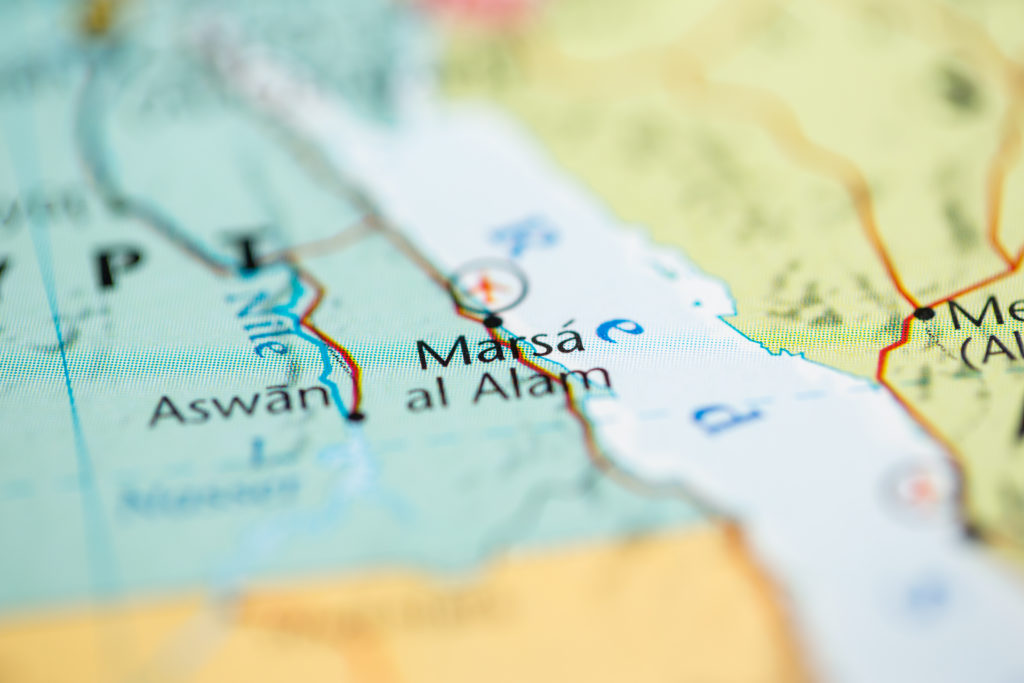


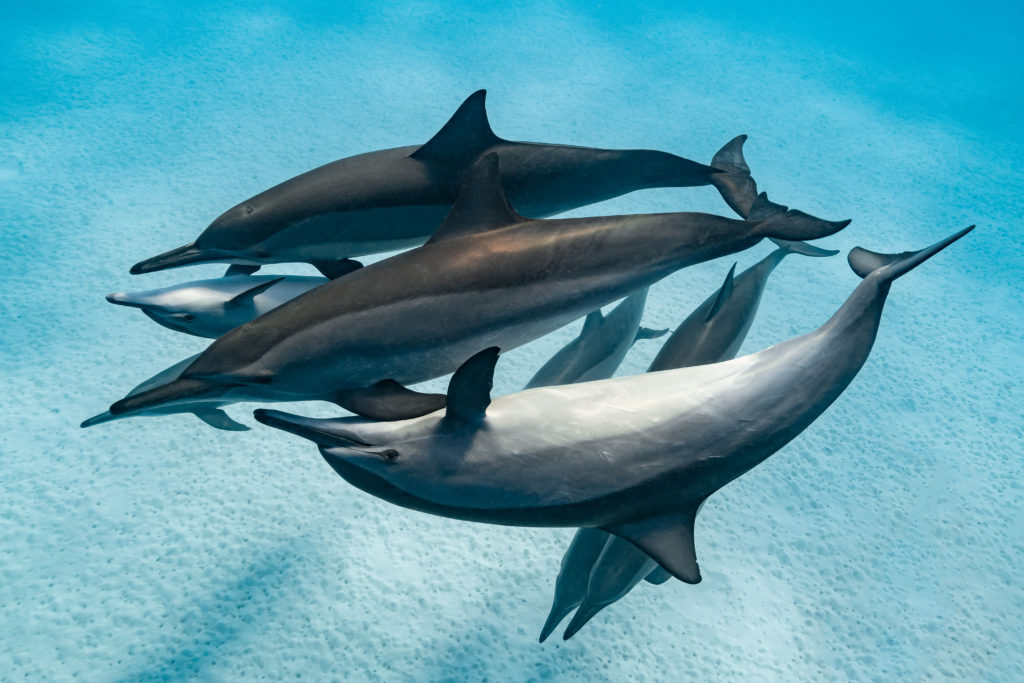
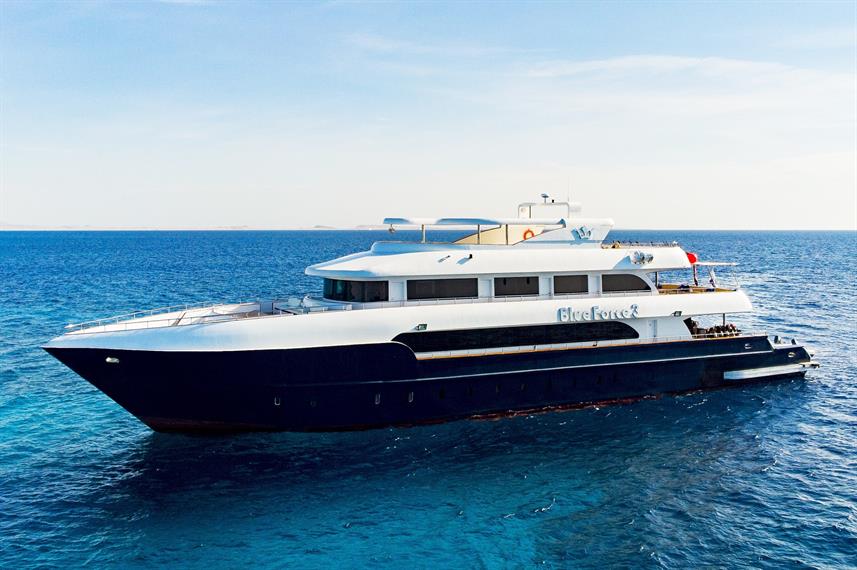
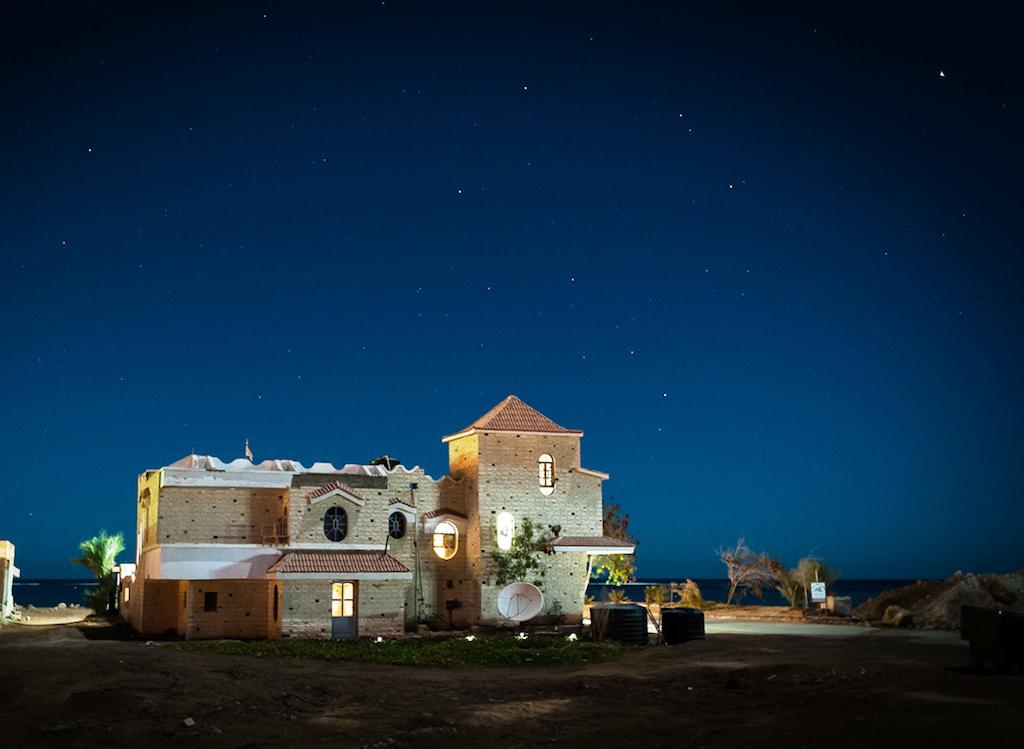
4) Marsa Alam
Less touristy still, Marsa Alam was previous another quiet fishing village – it’s only in fairly recent years that it’s become the hands down best dive destination in Egypt’s Red Sea.
That’s because it is located some 285km south of Hurghada and as such offers access to the pristine coral reefs and large pelagic life of Egypt’s seldom visited South Red Sea.
With most of the best dive sites here being a considerable way from the shore, they’re prone to strong currents; making them mostly suitable for advanced divers. This means those of you who make it are unlikely to have to share your dive sites!
Whilst there are some good local dives, which are indeed beginner friendly; the best diving to be had from Marsa Alam is through day trips to:
- Elphinstone Reef – A beautiful offshore reef with superb wall diving; it’s best known for offering regular encounters with Hammerhead Sharks and sometimes Oceanic Whitetip Sharks (October – December) as well as Tiger Sharks.
- Abu Dabbab – This shallow bay; which is beginner friendly, is one of the few places in the world one can spot Dugong! It’s also a good place to spot the rare guitar shark. Look out for Ghost Pipefish and Thorny Sea Horse to!
- Fury Shoals – The all time best coral reef in Egypt’s Red Sea is comprised of Fury Shoals; a variety of reefs made up of a stunning assortment of colourful hard and soft coral. Divers can spot various reef sharks and many colourful fish.
- Sha’ab Samadai (aka Dolphin House) – The clue’s in the name! An offshore reef with lagoon; home to a pod of friendly Spinner Dolphins that one can snorkel or even dive with.
It’s easy to arrange day trips to all of the above dive sites, although do be prepared to spend several hours each way on a basic boat. Another option to visit these sites is to embark on a South Red Sea Diving liveaboard.
Besides being on a much larger yacht with more space and onboard amenities to pass the time with, the main advantage of this is that you can also visit even more pristine and rarely visited diving sites, such as The Brothers Islands, Daedalus and St. Johns Reef.
You can find out more about these world class diving sites and red sea liveaboards by reading our “Red Sea Liveabaord Reviews Here“.
Most South Red Sea liveaboards depart from Port Ghalib, which is 60km to the North of Marsa Alam. The easiest way to reach Port Ghalib is by flying into Marsa Alam and catching a ride up to Port Ghalib.
Marsa Alam Diving Resort
- Best Marsa Alam Diving Resort – Diving Station Reef Villa
Marsa Alem PROS
- Witness Hammerhead Sharks, Dolphins, Dugong, Guitar Sharks, Oceanic Whitetip Sharks, Tiger Sharks and more!
- Preferred access point to Port Ghalib, the jump off point for South Red Sea liveaboards
- Access to the some of Egypt’s South Red Sea, which has the most pristine coral reef.
- South Red Sea is also the best place for spotting large pelagics like Manta Rays, whale Sharks, Tuna, Travellies and Giant Barracuda
Marsa Alem CONS
- If staying at a resort and not a liveaboard, all the best dive sites must be visited via day trip, meaning a long travel time on the boat
- Few shipwrecks
- Not much to do in Marsa Alam besides dive
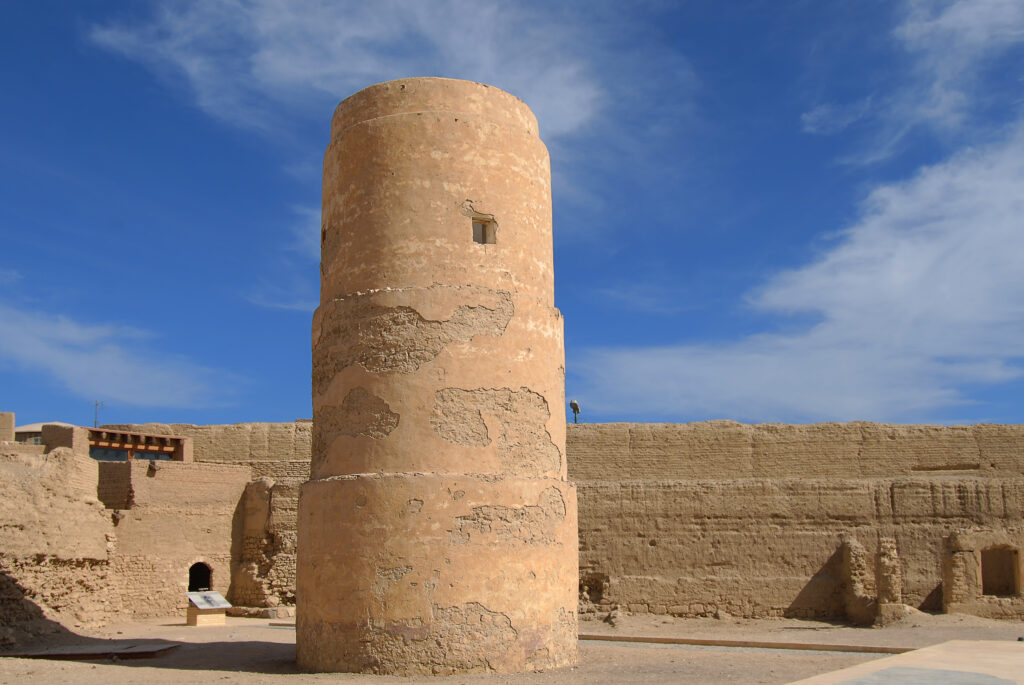
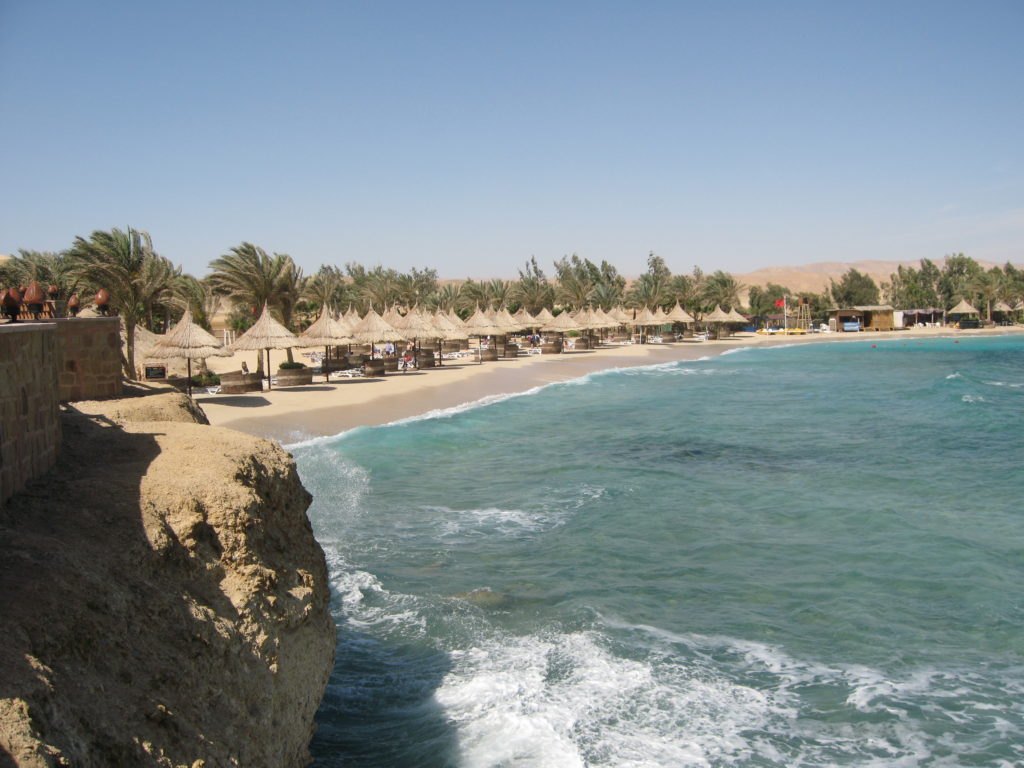
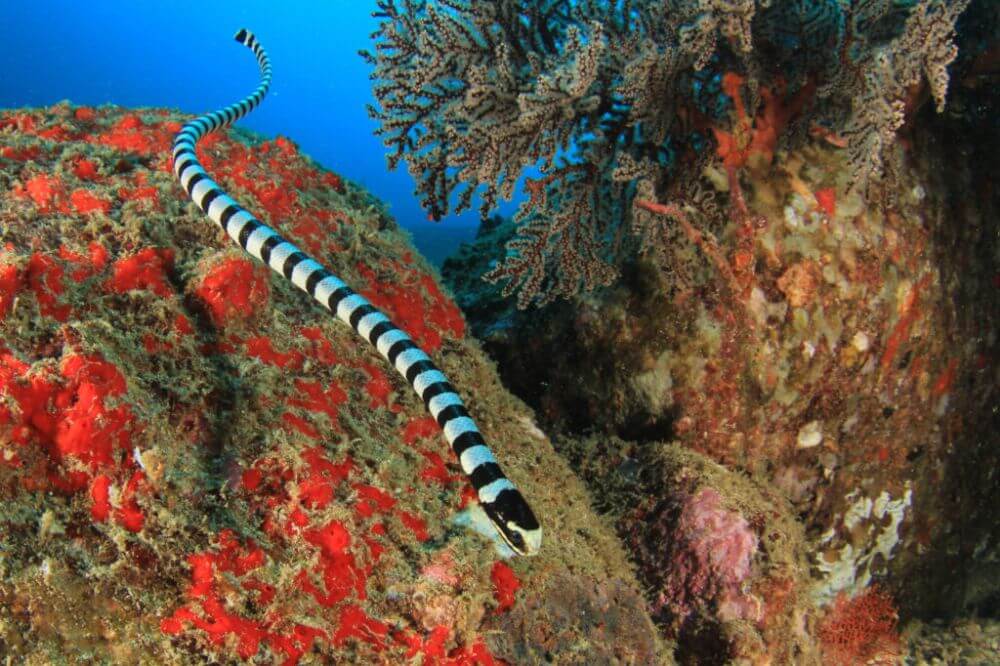
5) El Queseir
Another off the beaten track destination, El Queseir lies half way between Hurghada to the North and Marsa Alam to the South. It is an ancient town of some 5000 years and was once one of the most important ports in Egypt due to it’s closeness to the River Nile.
The coral reef here is in excellent condition and divers can spot many weird and wonderful critters including Sea Snakes, Blue Spotted Ribbontail Rays and Guitarfish.
Most diving is accessible from the shore, with the majority of dive sites being shallow and beginner friendly. This makes El Queseir an excellent destination to learn to scuba dive.
Although pelagics seldom pass through, it is possible to take day trips to Elphinstone reef from here as well as Abu Dabbbab – two of the very best dive sites in all of Egypt’s Red Sea, with the former being a shark lovers paradise and the latter being one of the few places you can spot Dugong, aka Sea Cows.
Another big attraction of El Queseir, besides it’s laid back vibes and non-touristy feel, are the cultural and historical sites to be witnessed.
It’s definitely worth checking out the 4000 year old rock inscriptions at Wadi Hammamat as well as the ruins of the ancient Roman port of Myos Hormos.
There is also a 500 year old Ottoman Castle – complete with cannons and a beautiful mosque. Visitors can also partake in a desert safari where you’ll witness the eerily beautiful Queseir desert and mountains.
El Queseir Diving Resorts:
- Best (only!) El Queseir Diving Resort – Coral Hills Resort
El Queseir PROS
- Local dive sites are suitable for beginners
- Day trips to Elphinstone Reef and Abu Dabbab
- Lots of interesting critters including Sea Snakes and Stingrays
- Laid back, non-touristy feel
- Many additional sightseeing activities
El Queseir CONS
- If staying at a resort and not a liveaboard, all the best dive sites must be visited via day trip, meaning a long travel time on a small boat.
- Few shipwrecks
- Not much to do in Marsa Alam besides dive
- Limited choice of dive schools and only one diving resort
Red Sea Diving Season
December – February: Winter time in Egypt. Water temperature is fairly chilly at around 72 F (22 C). Air temperatures usually range from 20 – 25 degrees celcius. However, visibility is at it’s best, so things aren’t all bad. If you have to pick any month over winter, then diving in Egypt in february is your best call as things will be starting to warm up.
March – May: Spring vibes! Both air and water temperatures are relatively warm, resulting in an ideal balance. This is the best time to see a Whale Shark, especially in the northern Red Sea. However, March – May is also diving high season so some dive sites, especially in more touristy areas like Sharm El Sheikh and Hurghada, which can become very crowded. Generally, March – May is viewed as the best time to go.
June – August: Diving Low Season. Dive sites will be at their most quiet. However, air temperatures get very hot with an average of around 30 – 45 degrees celcius! However, these warmer temperatures force Hammerhead sharks into Egyptian waters up from Sudan. This is also the best time to snag discount liveaboard deals with red sea diving safaris.
September – November: Autumn period. Air and water temperatures balance for optimum balance both above and below the waves. This is the best time to spot Thresher Sharks in the north red sea and manta rays in the south. It’s still fairly crowded although not as much as March – May.
Red Sea Temperature
The Red Sea temperature fluctuates throughout the year as well as in different regions. Use this website to get an average reading for land and sea temperature in Egypt.
Red Sea Dive Sites Map
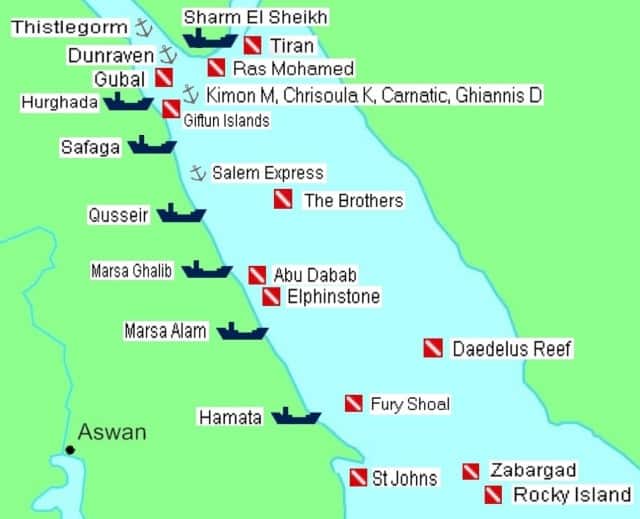
Red Sea Diving Squad DEBRIEFING:
And there you have it! You are now officially armed with everything you need to know to get the most out of your Egyptian Red Sea diving holiday! (Assuming you’ve read this entire article and not just skipped to the bottom of it!)
We’ve covered the different regions in Egypt’s Red Sea and what they have to offer, how to dive there, the very best diving resort towns and when to go! Don’t forget that the twin article to this is our piece on the Best Red Sea Liveabaords.
You can rest assured that we constantly update and review our content to ensure it reflect the very latest circumstances in each destination. No less has been done to this piece.
If you do have any further questions or would like a member of our team to be assigned with helping you pick your dream diving holiday in Egypt, feel free to send us a message by clicking “Contact Us” at the bottom of this page. Fin.
Support the Squad!
Some of the links in our content are affiliate links. This means that if you buy a product, book a liveaboard, book accommodation or purchase insurance, we earn a small commission at no extra cost to you. Thanks!
